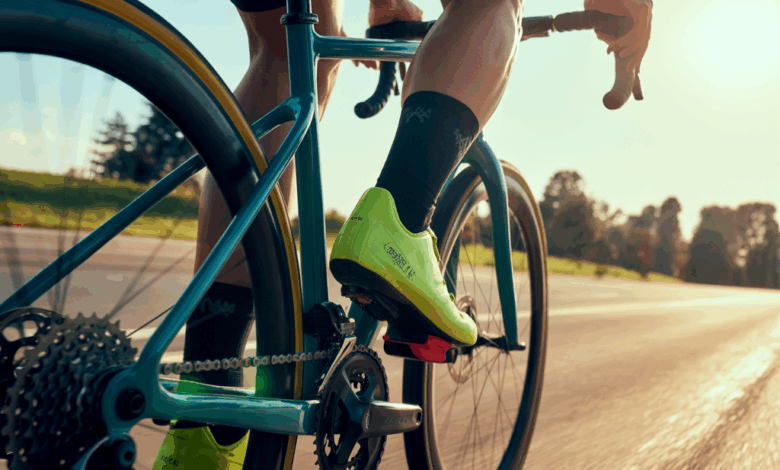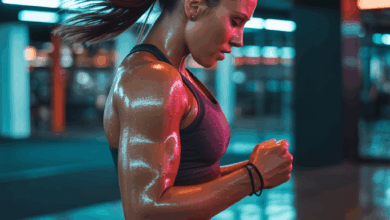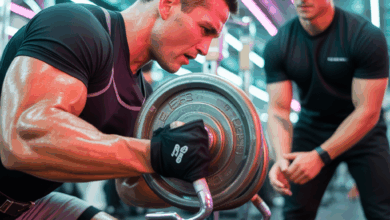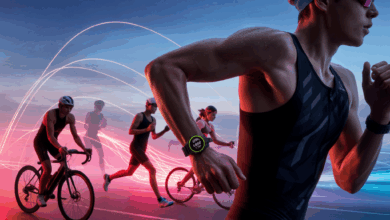How Should Cycling Shoes Fit: The Complete Guide to Comfort, Power, and Injury Prevention

Ever finished a long ride with numb toes, painful hotspots, or a heel that kept slipping off the back of your pedal? If you’ve ever wondered how should cycling shoes fit so rides feel effortless instead of painful, you’re not alone. The right fit can instantly boost power, reduce foot pain, and make every workout more enjoyable—yet many riders ride in shoes that don’t match their foot shape or riding style.
Why proper cycling shoe fit matters
Good shoe fit isn’t just comfort fluff—it’s a performance and health issue. A shoe that fits poorly can cause blisters, nerve pain (neuromas), inefficient pedaling, and even knee or hip strain. Conversely, a well-fitted cycling shoe improves power transfer, stabilizes your foot, and keeps you comfortable on long rides.
Performance and power transfer
Tight contact between the foot and pedal centers force transfer—less wasted motion, more wattage. Proper stiffness and a secure fit ensure the pedal stroke remains smooth throughout the ride.
Injury prevention and comfort
Ill-fitting shoes can change your foot’s alignment and cause hotspots, numbness, or joint pain. A correct fit helps maintain proper biomechanics and reduces the risk of overuse injuries.
How should cycling shoes fit: step-by-step fitting guide
Follow these practical steps when trying on cycling shoes—road, mountain, or indoor cycling shoes—so you get a precise, comfortable fit.
- Try shoes on in the afternoon or after a warm-up: Feet swell during activity, so measure when they’re slightly larger.
- Wear the socks you’ll ride in: Thickness changes fit. Road riders often use thin socks; MTB or touring riders may prefer thicker performance socks.
- Check length: There should be about a thumb’s width (≈1–1.5 cm) between your longest toe and the end of the shoe for most riders. If toes hit the front under hard pedaling or descending, size up.
- Assess width and toe box: The shoe should cup the forefoot without squeezing the toes. For wide feet or bunions, look for models with a wider last or a more generous toe box.
- Heel fit: Heel should be snug with minimal heel lift (ideally under 5 mm while actively pedaling). Excessive slip causes blisters and reduces stability.
- Arch and midfoot: Closure systems (BOA, velcro, ratchets) should secure the midfoot without pressure points. If you have high arches, check that the shoe’s insole provides support or be prepared to swap in an orthotic.
- Stiffness: Road shoes typically have a very stiff carbon sole for maximum transfer. Mountain shoes are slightly more flexible for walking. Choose stiffness according to your riding needs.
- Cleat placement: Position cleats so the pedal spindle aligns roughly under the ball of your foot to optimize leverage and minimize knee stress. Small tweaks matter—adjust gradually and test on short rides.
- Test the fit: Clip into pedals in the store or try a trainer at home. Simulate sprints, climbs, and standing efforts—comfort in static standing doesn’t always translate to comfort while pedaling.
Road vs. mountain bike shoes: fitting differences
Road cycling shoes tend to be narrower with stiffer soles and minimal tread. They favor power transfer and are less forgiving for gait variability. Mountain bike shoes often have a roomier toe box, slightly more sole flex, and lugged tread for walking. Choose the style that matches your riding and adjust fit expectations accordingly.
Real-world examples and practical tips
Here are a few rider scenarios and what to look for:
- Century rider: Prioritize comfort—consider shoes with a roomy toe box and an insole that supports your arch. Double-check cleat position to avoid hotspots on long miles.
- Commuter: If you walk to or from work, a shoe with some sole flexibility and a grippy tread helps. Consider MTB-style shoes for daily use.
- Road racer: Go for a snug, performance-fit shoe with a stiff sole. Minor discomfort is common at first; however, numbness or sharp pain is not acceptable—adjust or size up.
Simple fitting checklist to carry with you
- Do toes have slight wiggle room? Yes / No
- Does the heel stay put under load? Yes / No
- Are there any hotspots after 10 minutes of pedaling? Yes / No
- Is cleat alignment comfortable and pain-free? Yes / No
Workout variations to test and train with properly fitted shoes
Use specific workouts to validate shoe fit and to train your feet and legs for comfort and performance:
- Cadence drills (5×3 minutes): Spin at high cadence (100+ rpm) to feel shoe stability and midfoot security. Good fit reduces wobble and foot fatigue.
- Short intervals (8×1 minute): Test heel slip during sprints—any excessive movement indicates a poor fit or loose closure.
- Long steady rides (2–4 hours): Validate comfort over time; check for numbness or pressure spots and tweak cleats or padding as needed.
- Hill repeats: Forceful standing efforts reveal heel retention and forefoot comfort—both critical for climbs.
Foot care, strength, and lifestyle tips
Good shoe fit is one part of a healthy cycling setup. Combine it with foot care and strength work:
- Stretch calves, plantar fascia, and Achilles after rides.
- Do foot intrinsic strengthening—towel scrunches and toe spreads—to improve stability inside the shoe.
- Replace insoles if they lose cushioning; consider custom orthotics for chronic alignment issues.
- Maintain healthy circulation with balanced nutrition and hydration—electrolytes matter on long rides to prevent cramps and numbness.
Common mistakes to avoid
- Buying shoes that are “just smaller” for a snug feel—this often causes numbness and pinching.
- Neglecting cleat position—poor setup can mimic shoe fit problems.
- Assuming all brands fit the same—different lasts and closure systems lead to big fit differences.
Frequently Asked Questions
How tight should cycling shoes feel?
Shoes should feel snug around the midfoot and heel but not painfully tight. You want minimal heel lift under load and enough forefoot room that toes can wiggle slightly. If you experience numbness within 10–15 minutes, the shoe is too tight.
Should my toes touch the end of the shoe when pedaling?
No—your toes should not be pressed against the front. Aim for about a thumb’s width of space from the longest toe to the toe box. If toes hit during sprints or descents, size up or try a different last.
Can I use cycling shoes for commuting and walking?
Some shoes (MTB-style or commuter-specific) offer more tread and flexibility for walking. Road shoes with stiff, smooth soles are less comfortable for walking. If you need dual-purpose shoes, prioritize a slightly more flexible sole and a secure closure system.
Conclusion — How should cycling shoes fit and what to do next
Getting the answer to “how should cycling shoes fit” right transforms your ride—better power transfer, fewer aches, and more enjoyable training. Start by checking length, width, heel retention, and cleat placement; test with short intervals and long rides; and pair fit with foot-strengthening exercises and smart nutrition. If you’re unsure, try multiple brands and models—different lasts fit different feet.
Ready to optimize your ride? Check out our workout routines to test your new fit, browse our nutrition guides for fueling tips, and read practical wellness tips to keep your body ride-ready. Comment below with your shoe brand and foot type, and I’ll suggest fitting tweaks for your next ride.





